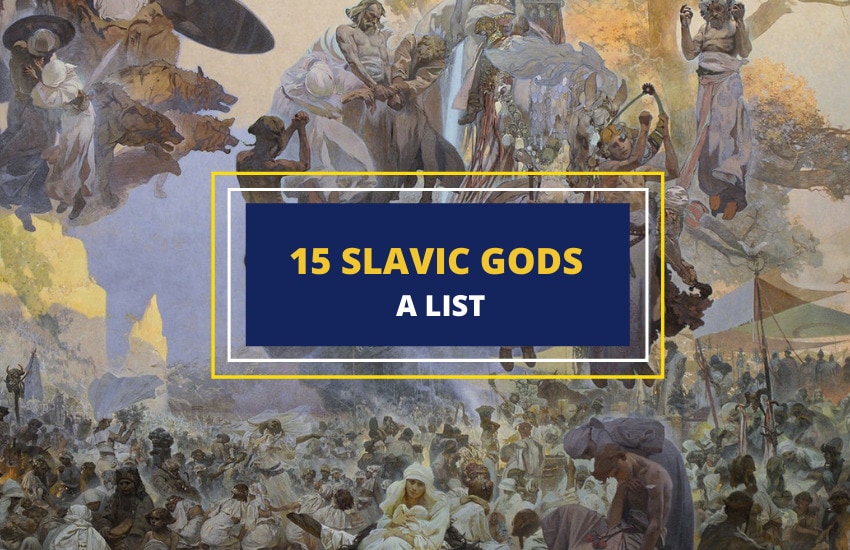
Table of Contents
Slavic mythologies belong to that special category of ancient religions that are not well-known today but are at the same time incredibly influential for many other cultures and religions around them. While much has been lost to the ages, we do know a fair amount about dozens of major Slavic deities, mythological creatures, and heroes.
Even though most Slavic nations converted to Christianity over a millennia ago, they all have various pagan rites and rituals that have been incorporated into their now-Christian holidays. From there, as well as for writings of early and post-pagan Christian scholars, we know enough to form a decent view of the most important Slavic deities. So, let’s go over the 15 best-known Slavic gods and goddesses below.
The 15 Most Famous Slavic Gods
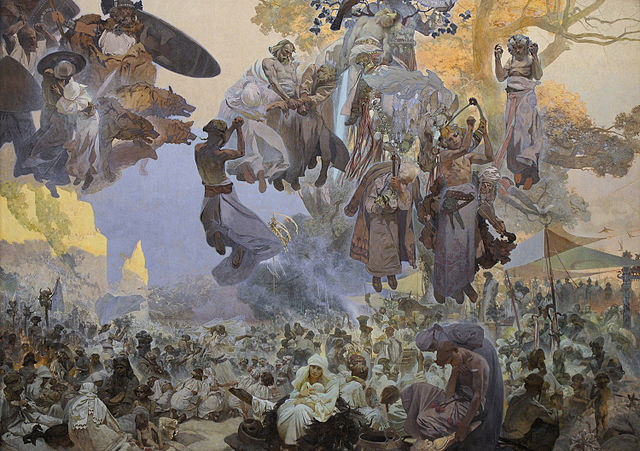
We know very little about even the most major Slavic gods. There really aren’t any original Slavic prayers or myths – just interpretations written down centuries later by Christians. Even from the little we do know, we can discern quite a bit about the Slavic people and their worldview.
Slavic gods are highly naturalistic and spiritual, as is the case with many other ancient religions. These gods represent forces of nature such as wind, rain, fire, and the four seasons, as well as abstract and spiritual concepts such as light and dark, love and hate, fertility and death, and so on.
Additionally, it’s clear that Slavic gods have an inherent duality to them. Many Slavic gods would represent seeming opposites such as death and rebirth, for example, or light and dark. That’s because the Slavs recognized the cyclical nature of the world around them – the spring coming from winter and new life coming from death.
As a result of that, most Slavic gods seem to have been viewed as amoral – neither good nor bad, just integral parts of the natural world around the Slavic people.
1. Perun – The Slavic god of thunder and war
Probably the most famous Slavic deity, Perun is the chief deity in most Slavic pantheons. He is a god of thunder, lightning, and war, and is often associated with the oak tree. He does represent both Nordic gods Thor and Odin although a direct connection hasn’t been drawn yet. The mountain range Pirin in Bulgaria is named after him.
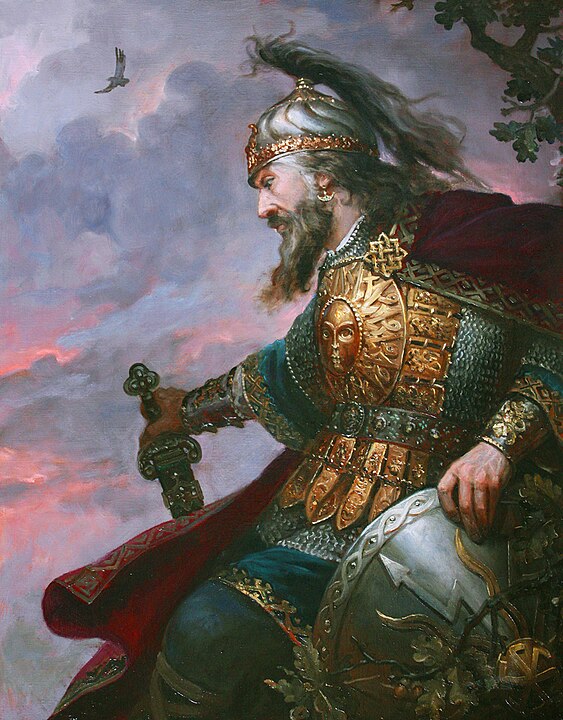
2. Lada – Goddess of beauty and love
Lada is widely worshipped in springtime as a goddess of love, beauty, and a major patron of weddings. She has a twin brother called Lado but the two are often seen as two parts of the same overall entity – quite a common concept in the Slavic religions. Some Slavic people worshipped Lada as a mother goddess while others saw her as a maiden. In either case, she does seem quite similar to the Scandinavian goddess of love and fertility Freyja.
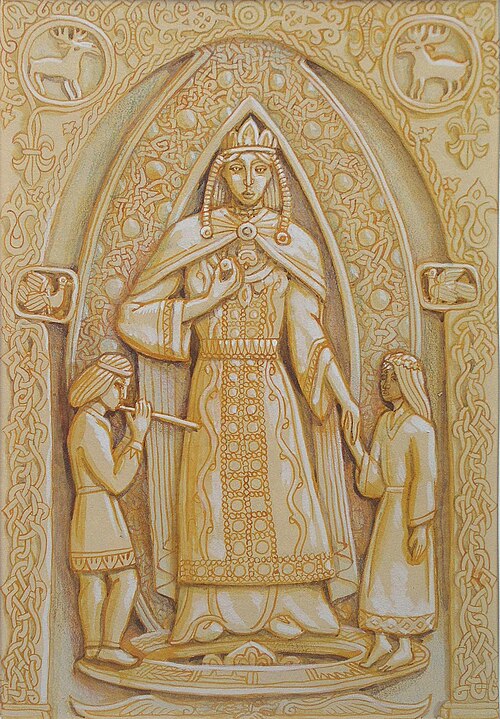
3. Belobog and 4. Czernobog – The gods of Light and Darkness
These two gods have been popularized in the west in recent years by the popular novel American Gods by Neil Gaiman and the TV series of the same name. We mention Belobog and Czernobog together because, just like Lada and Lado, they are viewed as two separate yet intrinsically connected beings.
Belobog is the god of Light and his name literally translates as “white god”. On the other hand, Czernobog’s name translates as “black god” and he’s viewed as the god of Darkness. The latter was viewed as a representation of the evil and dark part of life, as a demon that brought only calamity and misfortune. Belobog, on the other hand, was a pure and perfectly good god who compensated for his brother’s darkness.
While some scholars argue that Belobog was often honored and celebrated separately, most agree that the two always went hand in hand. The two are simply viewed as an inescapable duality of life. So, if and when people celebrated Belobog without his brother, this likely was because of their desire to focus on the good things in life.
5. Veles – The shapeshifting serpent and god of the earth
A nemesis to Perun, Veles can also be found in almost all Slavic pantheons. He’s usually viewed as a god of storms too, however, Veles is often portrayed as a giant snake. In that form, he tries to climb up Perun’s sacred oak tree and sneak into the thunder god’s domain.
The snake form isn’t Veles’ only shape, however. He often appears in his divine humanoid form too but he’s a shapeshifter too. In his serpent form, he often succeeds in stealing some of Perun’s possessions or kidnapping his wife and children and dragging them down into the underworld.
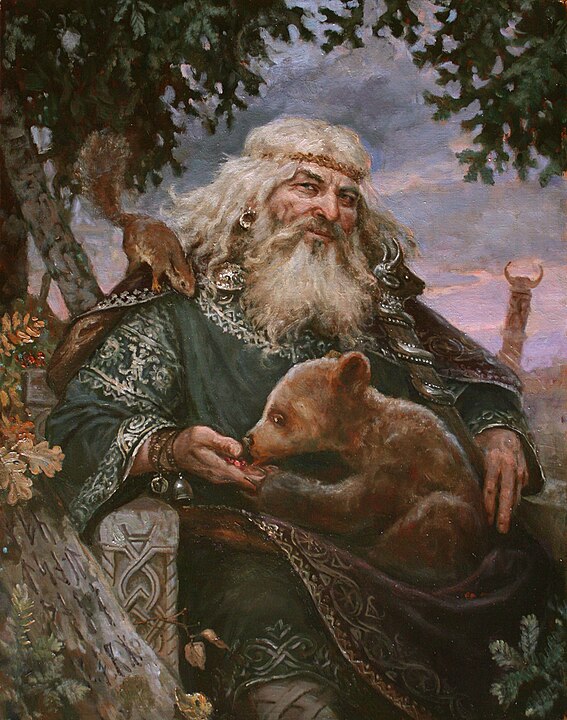
6. Dzbog – God of rain, a hearth’s fire, and good fortune
Another famous shapeshifter, Dzbog or Daždbog is a god of good fortune and abundance. He’s also associated with both rain and a hearth’s fire. His name directly translates as “giving god” and he was worshipped by most or all Slavic tribes. His association with both rain and fire seems to be in relation to their “giving” capacities – the rain giving life to the ground and the hearth’s fire giving warmth in the cold winter months.
7. Zorya – The trinity goddess of dusk, night, and dawn
Like other Slavic deities, Zorya is often depicted with two different personalities – that of dusk and dawn. In fact, in some myths, she also has a third personality – that of the night between dusk and dawn.
Each of these Zorya’s has her own name too. Zorya Utrennjaja (or Zorya of the Morning) is the one who opens up the gates of heaven every morning to let the sun rise. Zorya Vechernjaja (Zorya of the Evening) then closes the gates of heaven once the sun has set.
The third aspect of the goddess, when she’s mentioned, is Zorya Polunochnaya (Zorya of the Midnight). She watched over the heavens and the earth every night. Together, the two or three aspects of the goddess are often portrayed as sisters
Even though they are supposed to look after different parts of the day, it’s worth noting that their main name – Zorya – translates as dawn, aurora, or shine in most Slavic languages. So, once again, even though this trinity goddess is meant to represent different and opposite aspects of life, the Slavic people still focused on the positive part of the deity’s identity.
The Zorya trinity was also depicted in Neil Geiman’s American Gods novel and the subsequent TV series based on the book.
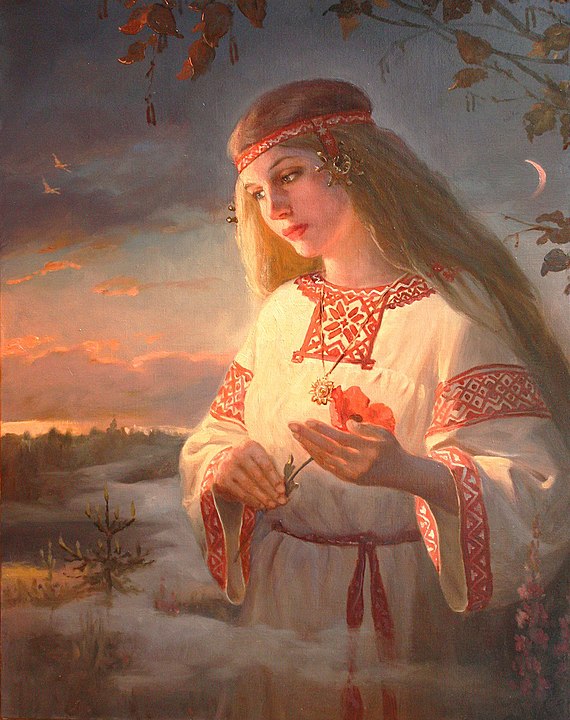
8. Mokosh – The Slavic fertility goddess
One of many fertility goddesses in Slavic mythology, Mokosh is also a mother figure and was worshipped as a protector deity to all women. She is associated with most traditionally womanly activities such as weaving, spinning, cooking, and washing. She also watched over women during childbirth.
Among East Slavs, in particular, the cult of Mokosh as a goddess of fertility was especially prominent and explicit. There, she wasn’t just a goddess of fertility but a goddess of sexuality as well. Most of her altars included two giant breast-shaped stones and she was often portrayed holding phalluses in each hand.
9. Svarog – God of fire and smithing
Svarog is a solar deity in most Slavic cultures, as well as a god of fire and smithing. He is often paralleled with the Greek god Hephaestus, but those comparisons don’t do Svarog justice. In Slavic mythology, Svarog is often credited as not “just” a sun god but a creator deity as well – it was in his forge that the very Earth was created.
There are even Slavic groups that blend Svarog and Perun into one supreme patriarch deity. There are also legends claiming that Svarog created the world in his sleep. And, once Svarog wakes, the world will fall apart.
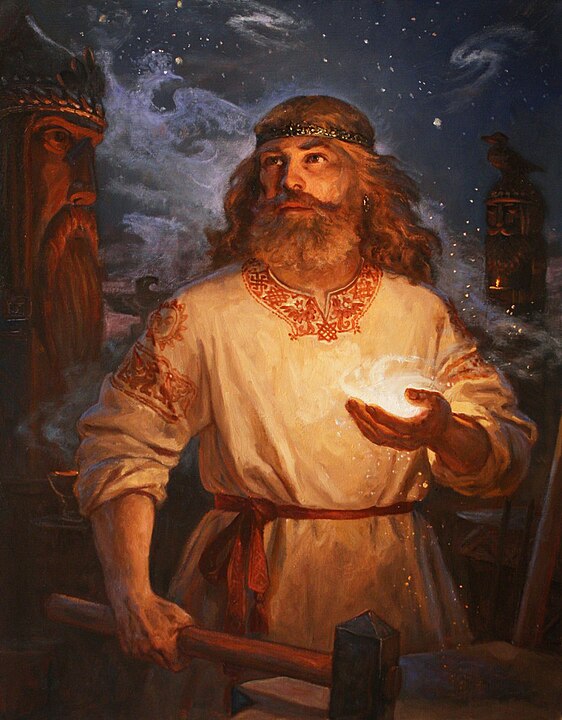
10. Marzanna or Morana – Goddess of winter, death, harvest, and rebirth
Marzanna, in Polish, or Morana, Marena, or just Mara, in most other Slavic languages, is a goddess of winter and death. However, in true Slavic fashion, she is also a goddess of the autumn harvest as well as the spring rebirth of life.
In other words, Morana isn’t the typical evil goddess of death but is yet another Slavic representation of the cycle of life. In fact, the Slavs also believed that Morana herself also dies during the cold of winter and is reborn as none other but the goddess of fertility Lada. The people would even build effigies of Morana to burn or drown in the winter only for the goddess to grow back in the trees next spring.
11. Živa – Goddess of love and fertility
Živa or Zhiva is a goddess of life, love, and fertility. Her name directly translates as “life” or “alive”. However, while the goddess is famous for her name, little is actually known about her. Most of what scholars agree on is purely derived from her name. Some even think that Zhiva is merely another name for the fertility goddess Mokosh.
12. Svetovid – God of both fertility and war
A god of abundance, as well as fertility and war, Svetovid is another one of those seemingly contradictory Slavic deities. He is also quite localized as he seems to have mostly been worshipped on the island of Rügen in Germany.
Svetovid was also unique in that he had four heads – two looking forward into the future, and two looking back into the past. Some statues also portrayed all four heads looking in the four directions of the world, overseeing his land as well as the seasons of the world.
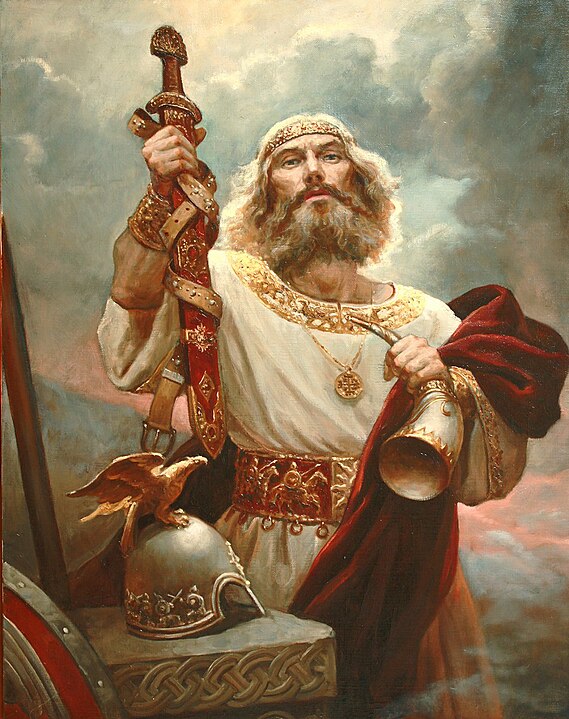
13. Triglav – The three-headed amalgam of Slavic gods
Triglav’s name literally translates as “three heads”. More crucially, however, this isn’t a single deity. Instead, it’s a trinity of three major gods in the Slavic pantheon. To complicate things further, the identities of these three gods vary from one Slavic tribe to the other.
Often, the three gods making up Triglav were Perun, Svarog, and Dzbog – the ruler, the creator, and the giver. However, Dzbog would often be replaced by Veles or by Svetovid.
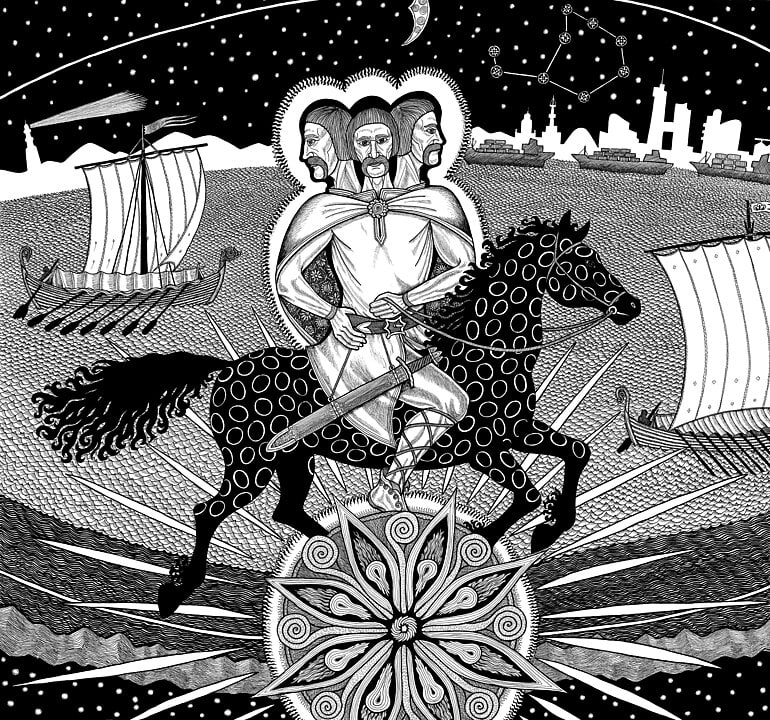
14. Yarilo – God of spring, vegetation, and fertility
Like Morana, Yarilo was a fertility god who was believed to have died every winter only to be reborn in the spring. His name means both “spring” and “summer” as well as “strong” and “furious”.
Yarilo was also a son of the thunder god Perun – his tenth son, to be exact, as well as his lost son. According to what we know of Yarilo’s legend, Perun’s enemy, the serpent god Veles kidnapped his enemy’s tenth son and brought him to his own domain in the underworld.
There, Veles raised Yarilo as his own adopted son and charged him with guarding his cattle. However, it is worth noting that Veles’ underworld in Slavic mythology was unlike the underworlds in other mythologies – instead, it was lusciously green and full of grassy plains and tall, rich trees.
15. Rod – The supreme Slavic god of ancestry, fate, creation, and family
According to some, Rod is the supreme deity and creator god of Slavic mythology. His name simply means family or kin, as in extended family. Naturally, he was worshipped as a god of the people’s ancestors and family, as well as their fate and destiny.
Rod was also known as Sud among most South Slavs which meant “Judge”. He was called “the birth-giver” too as every child is born from its ancestors and, therefore, is also a subject to Rod. As a god of all our ancestors, Rod was often worshipped as the creator of the human race.
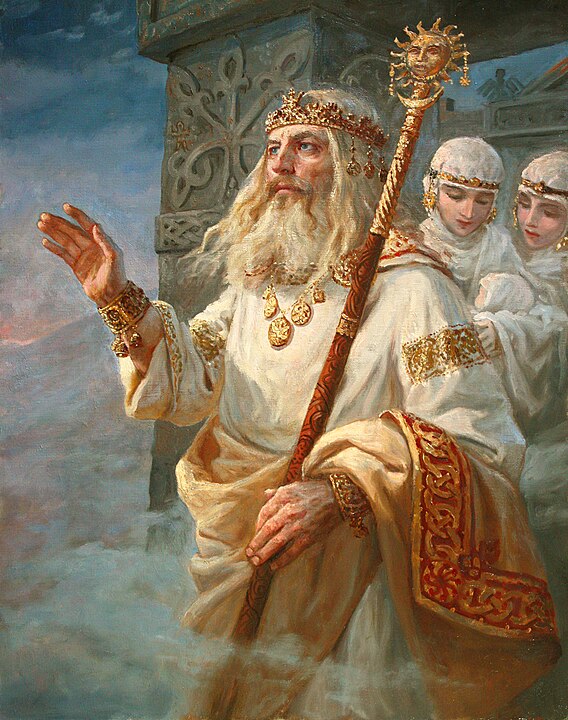
Other Famous Slavic Deities
There are many other Slavic deities that we know little about. A lot of those were not widely worshipped among all or most Slavic tribes but were local to certain specific regions. This is perfectly natural as is the fact that many of these minor deities likely came from other neighboring cultures such as the Celts, the Thracians, the Fins, the Germanic tribes, or others. Some of those other Slavic gods include:
- Zaria – Goddess of beauty
- Hors – God of healing and the winter sun
- Siebog – God of love and marriage, husband to Živa
- Marowit – God of nightmares
- Pereplut – goddess of drinking and the swift changing of fortune
- Berstuk – God of the forest and its many dangers
- Juthrbog –God of the moon
- Tawais – God of meadows and of good blessings
- Kupalo – God of fertility
- Dogoda – Goddess of the west wind as well as of love
- Koliada – Goddess of the sky and the sunrise
- Ipabog – God of the hunt
- Dodola – Goddess of rain and wife to Perun
- Sudz – God of glory and destiny
- Radegast – God of fertility, crops, and hospitality (likely inspired Tolkien’s “Radagast the Brown”)
- Dziewona – Virgin goddess of the hunt, similar to the Roman goddess Diana or the Greek goddess Artemis
- Peklenc – God of the underground and of justice
- Dzidzilelya – Goddess of sexuality, love, marriage, and fertility
- Krsnik – God of fire
- Zeme – Goddess of the earth (the name literally means “earth” in most Slavic languages)
- Flins – God of death
- Matka Gabia – Goddess of the home and the hearth
Is There One Unified Slavic Pantheon?
Definitely not. The ancient Slavic people began emerging during the 5th and 6th century AD in Eastern and Central Europe, but they covered such large parts of the continent that calling them just one tribe isn’t accurate. Instead, they are typically divided into three groups:
- East Slavs – Russians, Belarussians, and Ukrainians
- West Slavs – Czechs, Slovaks, Poles, Wends (in East Germany), and Sorbs (also in Eastern Germany, not to be confused with Serbia)
- South Slavs – Serbs, Bosnians, Slovenes, Croats, Montenegrins, and Macedonians
Hungarians and Bulgarians are also viewed as part-Slavic cultures today – the former being a part of the West Slavs and the latter of the South Slavs in the Balkans.
The reason most scholars separate these two ethnicities and countries from the rest is that they are also made up of other ethnicities, namely the Huns and the Bulgars. These were Central Asian dark-haired nomad tribes that also entered Europe around the 5th-7th centuries during the Migration Age in Europe (after the fall of the West Roman Empire).
Despite their mixed ethnicity, Bulgarians and Hungarians still have Slavic roots in both their culture and genealogy. In fact, Bulgaria was where the Cyrillic alphabet was invented by the two Greko/Bulgarian/Slav brothers and scholars Cyril and Methodius. Today, that same Cyrillic alphabet is used in many of the same Slavic countries above.
But why the history lesson?
Because it’s important to note that the Slavs weren’t just one people. Like the Celts before them, the Slavs had a common ancestry, language, and religion, but there were major differences between them, including in the deities they worshipped.
Slavic Gods Today
Even though the Slavic religion hasn’t been practiced widely for centuries it has left a major mark on the cultures the Slavic people eventually developed into. Most Orthodox Christians today have dozens, if not hundreds, of “Christian” rituals and traditions that stem from their ancient Slavic roots.
Besides, even today the Slavic gods and religion aren’t completely forgotten – there are minor pagan societies here and there quietly and peacefully practicing their rituals and honoring their natural gods and forces.
Additionally, many Slavic rites and concepts are alive in other cultures the ancient Slavs lived beside. The various Slavic tribes inhabited large parts of Europe for about a millennium and a half and interacted with many Germanic, Celtic, Scandinavian, Thracian, Hungarian, Bulgarian, Greco-Roman, Avar, Prussian, and other cultures.
Much like the ancient Celts, practiced or not, the ancient Slavic religion and culture are an integral part of the DNA of all of Europe.








